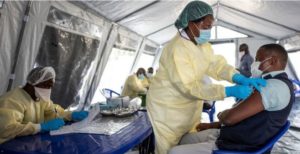Tourists to South East Asia call for more action on child safe tourism
Bangkok – Travellers to South East Asia want the tourism industry to take more action to protect children from exploitation, according to a new report issued by Project Childhood Prevention Pillar – an Australian aid initiative implemented by World Vision – in partnership with the University of Western Sydney.
Last year, more than 36 million tourists travelled to Cambodia, Lao PDR, Thailand, and Vietnam and many encountered children in vulnerable situations. The key findings of the groundbreaking report “The Child Safe Traveller”, released to coincide with the observance of World Responsible Tourism Day, polled almost 270 travellers from 39 different countries. It found 95% of travellers surveyed encountered local children and many interactions with children left tourists feeling sad, guilty, concerned and disappointed.
“There is a growing awareness of the significant risks to children who are begging or selling things at tourism sites and those visited in institutional care as part of organised tours or ‘voluntourism’ experiences,” said Aarti Kapoor, Program Manager of Project Childhood Prevention Pillar for World Vision.
Three quarters of travellers questioned were aware that children experience abuse or exploitation in connection with travel and tourism. While the majority of tourists said they want to help these at-risk children, the study showed many were confused about what actions they can take and wanted more information.
“With Asia tipped to receive the strongest tourism growth, globally, in the next two decades, it’s critical to build child safe tourism environments,” said Afrooz Kaviani Johnson, Technical Director of Project Childhood Prevention Pillar for World Vision. “Educating responsible travellers on how they can contribute is an essential part of this transformation.”
The study also found that information about child safe tourism had a direct positive influence on the decisions tourists made. Travellers who were aware of child safe tourism were more likely to refrain from giving money to children begging, visiting children in institutional care, and buying from children on the street.
Many participants said they would be more likely to support travel and tourism businesses that operated within child safe principles. Many also expressed a desire for more consumer options that would enable them to travel as child safe tourists.
“What ‘The Child Safe Traveller’ shows is that we need a concerted, combined effort between travellers, the tourism industry and governments. National Tourism Organisations have already agreed to promote child safe tourism to tourists and companies,” said Aarti Kapoor, Program Manager of Project Childhood Prevention Pillar for World Vision. “We each have a part to play to improve the quality of tourism in the Mekong and ensure children are safe and only positively impacted by tourism growth.”
Visit http://www.childsafetourism.org for more information .
Nov. 11,2013














